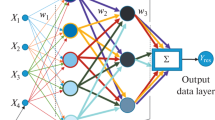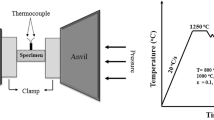Conclusions
-
1.
High temperature deformation together with low temperature deformation and an increase of the tempering temperature ensure the minimum anisotropy.
-
2.
The degree of anisotropy increases with increasing degrees of swaging during low temperature thermomechanical treatment.
-
3.
The presence of the ferrite-carbide mixture in the metal intensifies the anisotropy of the strength characteristics.
Similar content being viewed by others
Literature cited
A. V. Stepanov, Izv. AN SSSR, Seriya fizicheskaya,14, No. 1 (1950).
C. Barret, Structure of Metals [Russian translation], Metallurgizdat, Moscow (1948).
V. Ya. Mezis and I. M. Pavlov, Izv. AN SSSR, OTN, No. 6 (1958).
J. Intrater and E. Machlin, Acta Metallurgica,7, No. 2 (1959).
Author information
Authors and Affiliations
Additional information
Translated from Metallovedenie i Termicheskaya Obrabotka Metallov, No. 2, pp. 41–43, February, 1965
Rights and permissions
About this article
Cite this article
Dryukova, I.N. Anisotropy of the properties of steel after thermomechanical treatment. Met Sci Heat Treat 7, 111–113 (1965). https://doi.org/10.1007/BF00655816
Issue Date:
DOI: https://doi.org/10.1007/BF00655816




